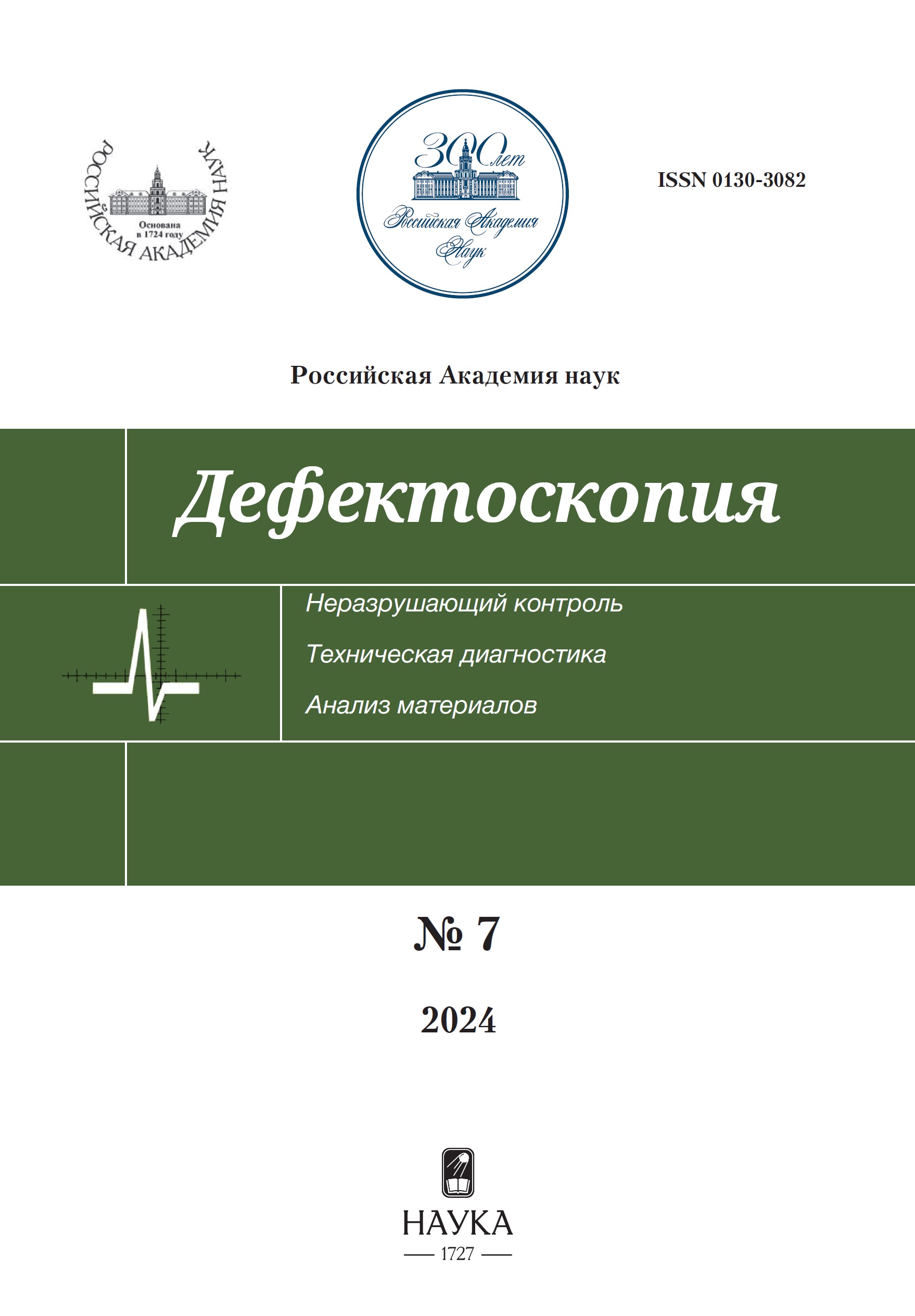Evaluating water ingress in glass fiber plastic/Nomex honeycomb panels under varying panel orientation
- Авторлар: Magoda C.M.1, Ngonda T.N.1, Vavilov V.P.2, Kladov D.Y.2
-
Мекемелер:
- Mechanical Engineering Department, Cape Peninsula University of Technology
- National Research Tomsk Polytechnic University
- Шығарылым: № 7 (2024)
- Беттер: 28-41
- Бөлім: Thermal methods
- URL: https://kazanmedjournal.ru/0130-3082/article/view/649323
- DOI: https://doi.org/10.31857/S0130308224070038
- ID: 649323
Дәйексөз келтіру
Аннотация
The paper presents the results of experimental and numerical investigations on water ingress trapped in aircraft honeycomb panels. The ingress of atmospheric water during aircraft service may cause minor or major damages of airplane crucial components. The percentage of water/ice filling honeycomb cells is an important factor related to possible cell damage. This study is focused on the analysis of the following inspection parameters: 1) influence of panel orientation (horizontal, vertical and Inclined at 30, 45 and 60°) on the efficiency of water detection, 2) efficiency and optimization of a heating technique in evaluating water ingress, 3) influence of water/ice phase transformation on detectability of water ingress.
The numerical analysis was conducted by using the ThermoCalc-3D software in order to evaluate the detectability of water ingress in the cases where a test panel is placed in different spatial orientations. The samples with water and ice were tested and analysed by using several data processing algorithms available in the ThermoFit software to enhance water detection performance. The signal-to-noise ratio concept was used to compare efficiency of image processing algorithms in the inspection of water ingress in honeycomb panels with varying water content, spatial orientation and water/ice phase transformation.
Толық мәтін
Авторлар туралы
C. Magoda
Mechanical Engineering Department, Cape Peninsula University of Technology
Хат алмасуға жауапты Автор.
Email: vavilov@tpu.ru
ОАР, P.O. Box 1906, Bellville, 7535 Cape Town
T. Ngonda
Mechanical Engineering Department, Cape Peninsula University of Technology
Email: vavilov@tpu.ru
ОАР, P.O. Box 1906, Bellville, 7535 Cape Town
V. Vavilov
National Research Tomsk Polytechnic University
Email: vavilov@tpu.ru
Ресей, 634050 Tomsk, Lenin av., 30
D. Kladov
National Research Tomsk Polytechnic University
Email: vavilov@tpu.ru
Ресей, 634050 Tomsk, Lenin av., 30
Әдебиет тізімі
- Maldague X. Theory and practice of infrared technology for nondestructive testing, Wiley Series in Microwave and Optical Engineering. USA: John Wiley & Sons, New York, 2001. 682 p.
- Non-destructive Testing Handbook: Infrared and Thermal Testing (3rd ed.). USA: ASNT, 2001. 718 p.
- Kaplan H. Practical Applications of Infrared Thermal Sensing and Imaging Equipment. Tutorial Texts in Optical Engineering. SPIE Press. V. TT34. 1999. USA. 164 p.
- LaPlante G., Marble A.E., MacMillan B., Lee-Sullivan P., Colpitts B.G., Balcom B.J. Detection of water ingress in composite sandwich structures: a magnetic resonance approach // NDT & E International. 2005. V. 38. Is. 6. P. 501—507. doi: 10.1016/j.ndteint.2005.01.006
- Pfeiffer H., Heer P., Ioannis Pitropakis Pyka G., Greet Kerckhofs Patitsa M., Wevers M. Liquid detection in confined aircraft structures based on lyotropic percolation thresholds // Sensors and actuators. B. Chemical. 2012. V. 161. Is. 1. P. 791—798. doi: 10.1016/j.snb.2011.11.034
- Wang P., Pei Y., Zhou L. Near-field microwave identification and quantitative evaluation of liquid ingress in honeycomb sandwich structures // NDT & E international. 2016. V. 83. P. 32—37. doi: 10.1016/j.ndteint.2016.06.002
- Ibarra-Castanedo C., Genest M., Servais P., Maldague X.P.V., Bendada A. Qualitative and quantitative assessment of aerospace structures by pulsed thermography // Nondestructive Testing and Evaluation. 2007. V. 22 (2—3). P. 199—215. doi: 10.1080/10589750701448548
- Katunin A., Dragan K., Dziendzikowski M. Damage identification in aircraft composite structures: A case study using various non-destructive testing techniques // Composite Structures. 2015. V. 127. P. 1—9. doi: 10.1016/j.compstruct.2015.02.080
- Vavilov V., Marinetti S., Pan Y., Chulkov A. Detecting water ingress in aviation honeycomb panels: Qualitative and quantitative aspects // Polymer Testing. 2016. V. 54. P. 270—280. doi: 10.1016/j.polymertesting.2016.07.023
- Chulkov A.O., Shagdirov B.I., Vavilov V.P., Kladov D.Yu., Stasevskii V.I. Detecting and evaluating water ingress in horizontally-oriented aviation honeycomb panels by using automated thermal nondestructive testing // Rus. J. NDT. 2023. V. 59. No. 12. P. 1272—1279. doi: 10.1134/S1061830923600946
- Ibarra-Castanedo C., Brault L., Genest M., Farley V., Maldague X.P.V. Detection and characterization of water ingress in honeycomb structures by passive and active infrared thermography using a high resolution camera / Proc. 11th Int. Conf. Quant. InfraRed Thermogr, Naples, 2012. doi: 10.21611/qirt.2012.278
- Nesteruk D.A. Thermal imaging control of water in aviation cellular panels during aircraft operation / Cand. Sci. (Eng.) Dissertation. Russia. Tomsk: Tomsk Polytech. Univ., 2005.
- Pan’ Yanyan. Quantitative assessment of moisture content in composite honeycomb panels of operated aircraft by infrared thermography / Cand. Sci. (Eng.) Dissertation. Russia. Tomsk: Tomsk Polytech. Univ., 2018.
- Airbus develops infra-red water detector. Flight Global, 1995. https://www.flightglobal.com/airbus-develops-infra-red-water-detector/16622.article
- Airbus Adopts Infrared Thermography for In-service Inspection // Insight. October 1994. V. 36. No. 10.
- Vavilov V., Klimov A. Advanced Modeling of Thermal NDT Problems From Buried Landmines to Defects in Composites // Proc. of SPIE «Thermosense XXIV». 2002. V. 4710. P. 507—521.
- Shrestha R., Choi M., Kim W. Thermographic inspection of water ingress in composite honeycomb sandwich structure: a quantitative comparison among Lock-in thermography algorithms // Quant. InfraRed Thermography J. 2019. V. 18. No. 2. P. 1—16.
Қосымша файлдар



















